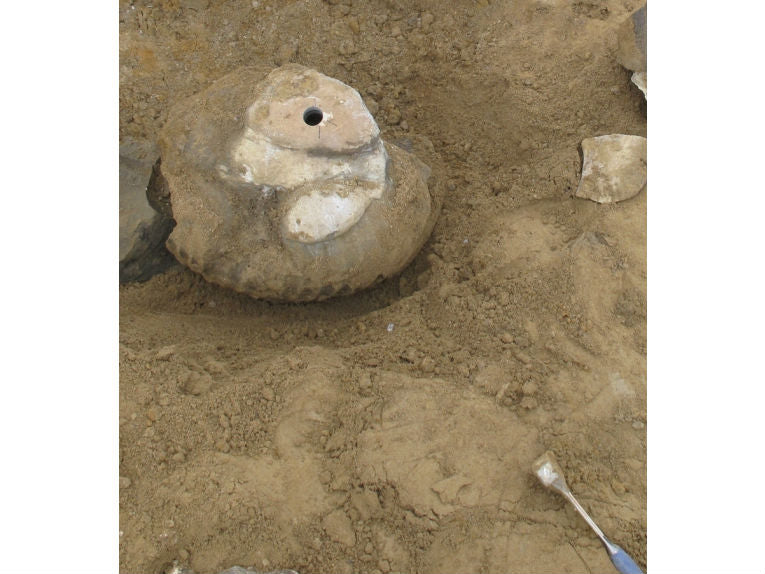Dinosaurs may have died out after two catastrophic events rather than just one, say American scientists.
It has been thought that mass extinction occurred 65 million years ago after a massive asteroid slammed into the Yucatán Peninsula in Mexico.
But researchers at the University of Washington research believe volcanic eruptions around 300,000 years before, heated the Earth, killing life on the ocean floor.
The University of Washington research suggests that when the asteroid struck, seafloor life - mostly clams and snails - were already dying from the effects of the volcanic eruptions on the Deccan Plateau in India.
Thomas Tobin, a UW doctoral student in Earth and space sciences, says, "The eruptions started 300,000 to 200,000 years before the impact, and they may have lasted 100,000 years."
The volcanic blasts sent fine particles, called aerosols, into the atmosphere that firstly cooled the Earth, but also sent carbon dioxide and other greenhouse gases into the atmosphere and produced prolonged warming that caused the first of the two mass extinctions.
"The aerosols are active on a year to 10-year time scale, while the carbon dioxide has effects on a scale of hundreds to tens of thousands of years," says Thomas Tobin.
The later extinction triggered by the asteroid impact, seems to have killed to kill more free-swimming species.
"The species in the first event are extinct but the groups are all recognizable things you could find around on a beach today," Thomas Tobin explains.
The findings of the research based on the fossil-rich area on Seymour Island, near the Antarctic Peninsula, have just been published in the journal Palaeogeography, Palaeoclimatology, Palaeoecology, The lead author was Thomas Tobin.
The region has thick deposits of sediment, possibly 10-times as much as Hell Creek Formation in Montana, which provides scientists with greater research material.
The team took small samples of surface core from rocks and fossils the found in the Antarctic sediment and used the magneto stratigraphy method, which uses known changes over time in Earth's magnetic field to show when the fossils were deposited. The thicker sediment means dating can be more precise.
Thomas Tobin says, "I think the evidence we have from this location is indicative of two separate events, and also indicates that warming took place."
There is no firm evidence yet that the first extinction had an effect on the subsequent one, but Thomas Tobin thinks it is possible that species that made it through the first event were affected enough that they could not overcome the long-term environmental effects of the asteroid impact.
"It seems improbable to me that they are completely independent events," he adds.
Co-authors were Peter Ward, Tobin's doctoral adviser, and Eric Steig, who are both UW professors of Earth and space sciences; Eduardo Olivero, from the Southern Center for Scientific Research in Argentina; Isaac Hilburn, Matthew Diamond and Joseph Kirschvink from the California Institute of Technology; Ross Mitchell from Yale University; and Timothy Raub from Scotland's University of St. Andrews.
The research was financed by the National Science Foundation Office of Polar Programs and the National Scientific and Technological Promotion Agency in Argentina.










